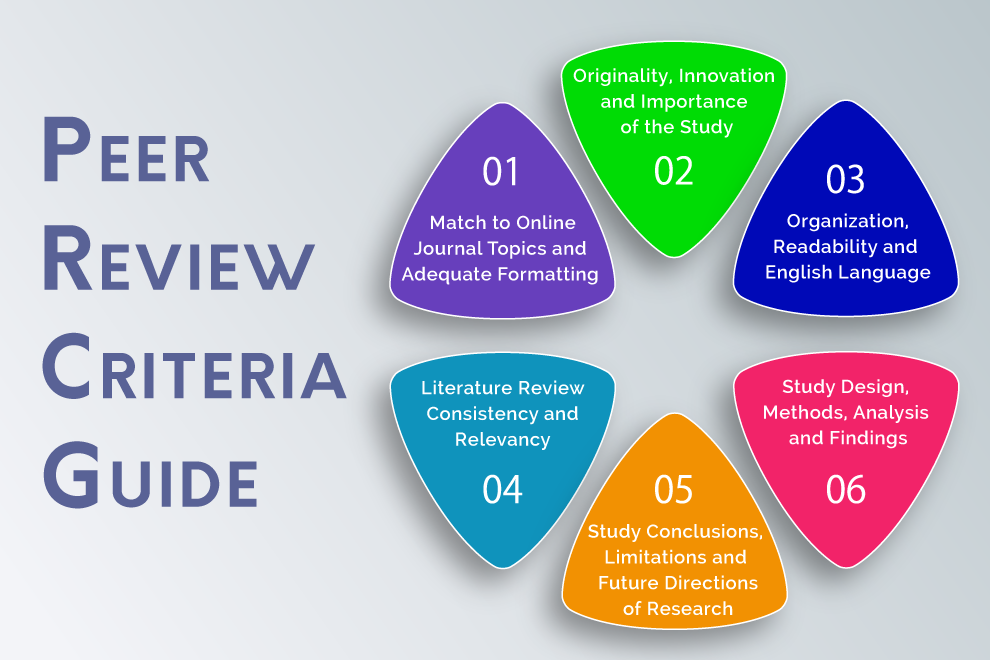The Pee Review process, or the refereeing process, is a complex and necessary step in the publishing process. However, the main purpose of this thorough process is to bring valuable academic journal articles in the world that other Researchers and Authors can use, access, share, and expand upon them.
A thorough and complex peer review process is a necessary step because it promotes a high quality journal publication process that brings valuable academic articles into the world. Moreover, Authors benefit from new perspectives about their work, using the insights from experienced Editors and Reviewers.
For any academic journal, the main objectives related to the peer review process should be to help Authors improve their work and to publish valuable high quality research papers that expand on a particular field study.
Peer Review Criteria of Editors and Reviewers
The most used type of scholarly journal article evaluation, is the double blind peer review which represents a very holistic and meticulous evaluation framework. This peer review starts with the Editor’s review, and, if a paper obtains grades that classify it for the next evaluation stage, then the manuscript will be examined by one or more expert Reviewers on a particular subject.
In the following sections, we examine the main differences between the two reviewing processes, and the criteria that are usually evaluated in the double blind peer review process.
What Are Editors Evaluating in a Peer Review Process?
Every academic journal has a review form that Editors use as an appraisal for each received scholarly article. Editors grade and evaluate aspects, such as:
- Match to academic journal topics,
- Originality & plagiarism (every academic article has to undergo a plagiarism analysis using different software),
- Adequate formatting of the scholarly journal article in accordance with Author Guidelines,
- English language comprehension,
- Organization and structure,
- Readability,
- Relevancy of cited references,
- Quality and relevancy of figures and tables
Additionally, Editors can provide specific, constructive, and actionable suggestions for making the article a better fit for publishing in a particular academic journal.
What Are Reviewers Assessing in a Peer Review Process?
Like the Editors, expert Reviewers usually have a form they have to fill in about the academic article they will examine, and again there are various aspects that need to be addressed. Reviewers grade and assess criteria, such as:
- Literature review consistency,
- Contribution to existing literature review,
- English language and understanding,
- Readability and/or organization,
- Innovation of the ideas presented in the academic article,
- Study design, analysis, and results,
- Importance of the research paper,
- Clear purpose of the article,
- Study Contribution, Limitations and Future Research Directions
- Construction and/or Structure (in terms of title, abstract, sections of the scholarly journal article, etc.)
If applicable, Reviewers may further develop any of the peer review criteria, or provide extra observations on how to improve the overall research article.
Efficient Peer Review Process
Especially for open access publications, Authors expect a detailed and comprehensive assessment of their work, but they also value efficiency for their peer review process. Efficiency in the evaluation process is characterized by the number of days between article submission and final response of the peer review. The response of the evaluation consists of 4 options: Accepted without any reviews, Accepted with minor changes, Accepted with major changes, Rejected.
At Expert Journals, we strive to offer our Authors who choose our scholarly journals for article publication a rigorous and efficient peer review. For our four open access academic journals, the average number of days from manuscript submission to article acceptance is 22.45 days, thus benefiting of rapid journal publication.
Our main objectives related to the rigorous double peer review process are to help Authors improve their work, using insights from experienced Editors and Reviewers, and to publish valuable article that expand on a particular field study.




